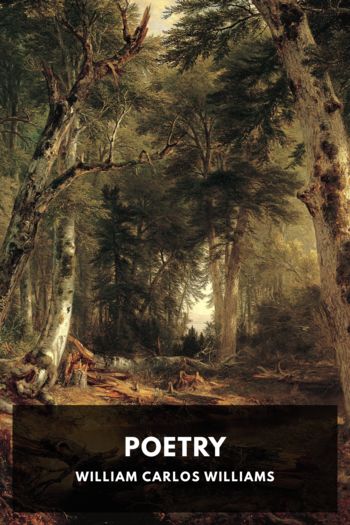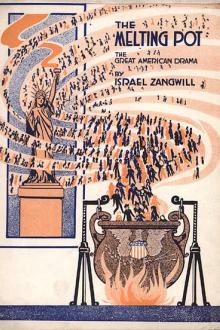No Modernism Without Lesbians, Diana Souhami [love books to read txt] 📗

- Author: Diana Souhami
Book online «No Modernism Without Lesbians, Diana Souhami [love books to read txt] 📗». Author Diana Souhami
For Bryher, taking on H.D., her emotional fragility, baby daughter and devilish mess, was a challenge. She was herself young, naive, battling with her own gender incongruity and her parents’ expectations of Victorian conformity. She had courage and determination, but was also in thrall to her parents and their status. And so she was divided; she must be both man and woman, both modernist and Victorian. She went ‘back and forth from Audley Street, strange and uneven but always staunch and loyal’.
Havelock Ellis
H.D. introduced Bryher to Havelock Ellis. ‘Nobody could have been kinder to me,’ Bryher said of him. She and H.D. began analysis with him. She read his Studies in the Psychology of Sex, they talked about women’s rights, he gave her a paper on Freud, and she became one of the first subscribers to the Journal of Psychoanalysis. The boundaries between the roles of therapist, analysand and friend were blurred. He called to see them at their Kensington flat and joined them there on Christmas Day 1919. There was a tree and presents. Perdita was brought over from the Norland Nursery.
Havelock Ellis was at home with sexual diversity. His wife, Edith, was lesbian; he was a virgin when he married her in 1891 and was impotent until he was sixty. His 1897 medical textbook on same-sex relationship, Sexual Inversion, had been censored as obscene. Bryher told him of her conviction that she was a boy trapped in a female body. He assured her this was a not uncommon phenomenon and gave her Psychopathia Sexualis by Richard von Krafft-Ebing to read.
H.D.’s relationship with him was colourful. In Fountain of Life, a collection of impressions and comments, he wrote of his interest in urolagnia and described in embellished prose how H.D. urinated on him:
her tall form languidly rose and stood erect, taut and massive it seemed now with the length of those straight adolescent legs still more ravishing in their unyielding pride, and the form before me seemed to be some adorable Olympian vase, and a large stream gushed afar in the glistering liquid arch, endlessly, it seemed to my wondering eyes, as I contemplated with enthralled gaze this prototypal statue of the Fountain of Life.
The therapeutic value of this to H.D. was unclear, but when, years later, she recounted the incident to Freud, she said he ‘bust his cat-whiskers with joy’.
Ellis’s overmind
Havelock Ellis’s theories and writings about sex were banned by the censors. His attempts to classify and understand gender and sexual behaviour were disallowed. His ideas seemed of questionable help to H.D. He talked of her mind taking on a physical character in the creation of her work:
When a creative scientist, artist or philosopher has been for some hours or days intent on his work, his mind often takes on an almost physical character. That is, the mind becomes his real body. His overmind becomes his brain… In place of the ‘real’ material body, the creative artist has a fantasmatic body, a body of the mind. It is this insubstantial body and ethereal overmind which produce man’s highest cultural achievements.
In 1919, in Notes on Thought and Vision, H.D. described how her ‘overmind’ went beyond her body and normal thinking to a state of visionary awareness. In thirty-two pages she wrote of the ‘super feelers of the super mind’ and how ‘Christ was the grapes that hung against the sunlit walls of Nazareth’.
H.D.’s hold on reality was uncertain and such flights were scary. She had much to cope with and talk of fantasmatic bodies and super feelers did not make her well. She slipped into depression. Bryher hoped a journey to Greece would help and held this out as a prize. They would visit the temples and sites of the gods who inspired H.D. Such a journey would take her away from the confusion of Gray, Aldington and the baby daughter whose needs she could not answer. As soon as H.D. was strong enough, they would leave:
We had made a pact; if I got well she would take me to Greece. I got well. But something was lacking. Something had gone. I was convalescent you might say psychically, I had taken up my bed and walked. But where had I walked?
Havelock Ellis was both analyst and friend. Bryher made plans for him to accompany them on the Greek visit.
to Greece with H.D. and Havelock Ellis
Early in February 1920, the three of them sailed on the SS Borodino, one of Ellerman’s passenger ships. Perdita, eleven months old, was left in the Norland Nursery. H.D. found the journey difficult. Terrified of the sea, she anticipated shipwreck and the engulfing ocean. The trio arrived at Piraeus at the end of the month. In Athens, she and Bryher stayed at the Hotel Grande Bretagne. ‘They were comfortably ensconced in the most luxurious hotel in the city,’ Ellis wrote. He was uncomfortably ensconced in a modest pension.
They explored the streets of Athens, heard Greek spoken, visited the Acropolis and the Archaeological Museum and sensed, like Oscar Wilde before them, ‘the spirit of the gods that dwelt within the marble’. Bryher’s hope was to transport H.D. to the classical past. They climbed the slopes of Mount Hymettus, ‘found early hyacinths and great rose-coloured anemones among the rocks’ and reached the eleventh-century monastery of Kaisariani where there was once a shrine to Aphrodite. They had tea with Evalina Palmer, who had been Natalie Barney’s lover and who extolled Sappho and her community of women on Lesbos. They climbed Mount Lykabettos, visited Eleusis, the birthplace of Aeschylus…
Here were the columns and statues of Greece bathed in authentic light. But H.D. was ill. She felt trapped. The war, the death of her brother and father, her broken marriage, separation from





Comments (0)